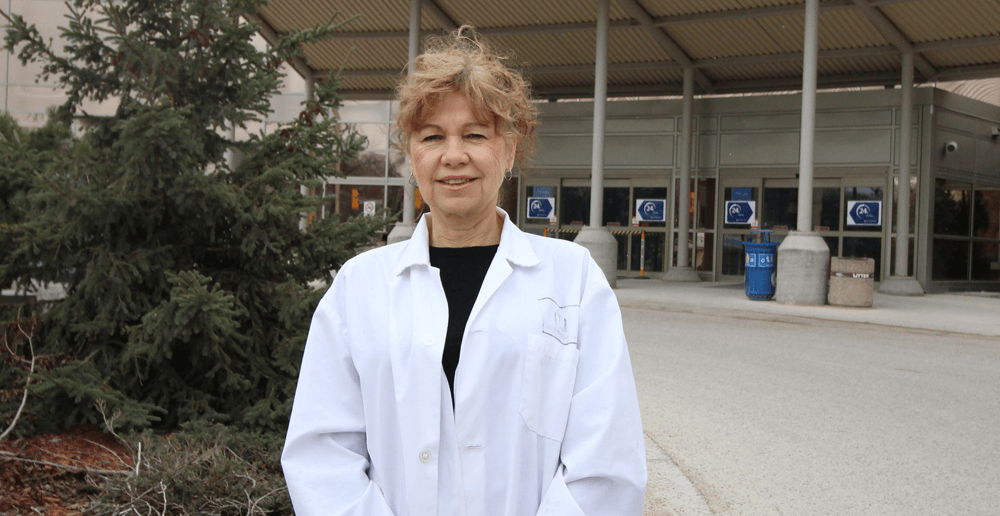Infection prevention efforts predate current pandemic

By Mike Daly
Winnipeg Regional Health Authority
Published Monday, May 11, 2020
This isn't Diane Robson's first rodeo.
With more than 35 years of experience as an Infection Prevention and Control (IP&C) Professional at St. Boniface Hospital, Robson, who is also a registered nurse, has a Bachelor of Science in Microbiology, and a Masters in Education, has worked her way through several infection control efforts and pandemics.
"I was around when we were worried about hepatitis B and hepatitis C, then HIV," she says. "I was around for SARS, H1N1 influenza, the Ebola scare, and now it's COVID-19."
Through them all, the goal was constant.
"Our goal in Infection Prevention and Control is to try to prevent the transmission of organisms that have the potential to cause infections and disease in patients, staff and visitors when they are in the health care environment," Robson says.
The routes taken to meet that goal are varied, and include (but not limited to):
- education of staff, patients and the public;
- healthcare associated infection surveillance;
- development and review of procedures, operational directives, education packages, and standard operating procedures;
- outbreak management;
- facility design, renovation and construction where appropriate;
- product and equipment review and evaluation;
- Medical Device Reprocessing;
- auditing and reporting;
- consultation.
In addition to the infectious organisms themselves, the IP&C team is tasked with helping develop a germ-fighting ethos that helps prevent infection not only during a full-blown pandemic, but long after such a crisis passes.
That means being able to "sell" the importance of preventative measures even when there are no outbreaks to keep them top-of-mind.
"Prevention is somewhat of a hard sell because you are talking about things that haven't happened yet," Robson says. "Once an outbreak occurs, then people will get on board more quickly or easily. We've seen this with the current pandemic; precautionary messages didn't resonate as much as they should have until it became quite obvious that this was something that could affect everybody and that it was more pervasive than people may have initially thought."
That phenomenon is more instinctual than it is deliberate, Robson adds.
"I think it's human nature to let those things go to the back of your mind," she says. "At IP&C, we've realized that we need to be out there, constantly promoting the message and connecting directly with the people we are trying to have an impact on, reminding them that they need to incorporate the things we're talking about into all of their behaviours."
In the midst of the current pandemic, infection prevention and control messaging that was once a hard sell has now found an audience that is all ears.
"You'd be hard-pressed to find someone who is not aware of the COVID-19 pandemic," Robson says. "Everybody wants a bottle of hand sanitizer on their desk, and the response from health care staff and the public has been impressive. Everyone seems to be trying to find out as much as they can. They want to be part of the solution, not part of the problem, and that's terrific."
Robson encourages the public to maintain that level of vigilance and commitment to preventing the spread of infection, even after the pandemic ends.
"We need all hands on deck," Robson says. "It really is the whole community – health care staff and the general public alike – that will make us successful. You have to have everyone on board. If we can maintain our commitment to social distancing, hand hygiene and other preventative measures we will continue to see the infection curve plateau and eventually descend."
Mike Daly is a Communications Specialist with the Winnipeg Regional Health Authority.
